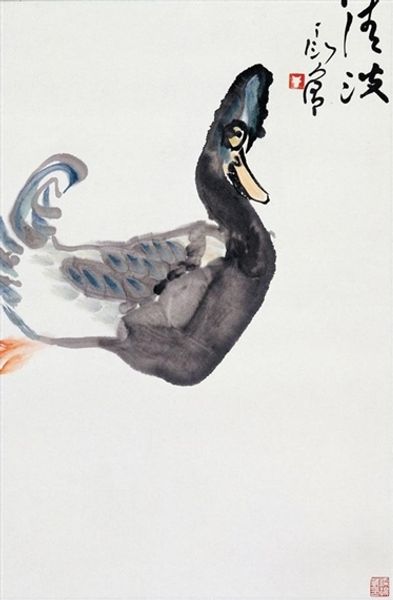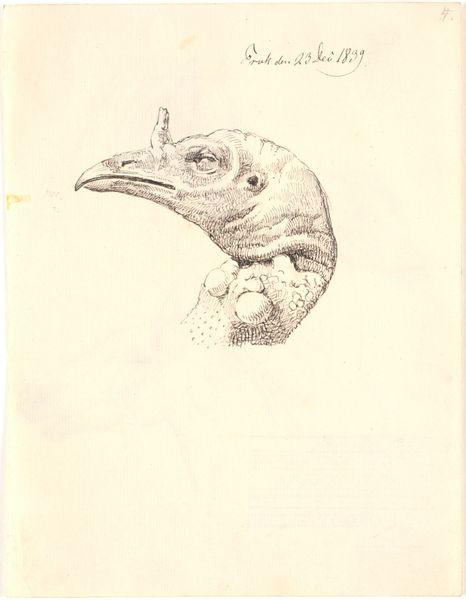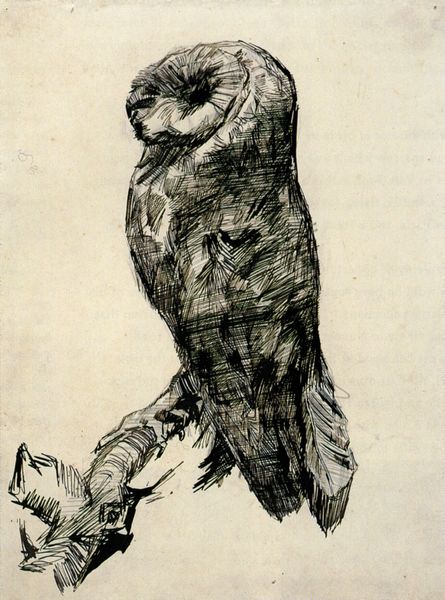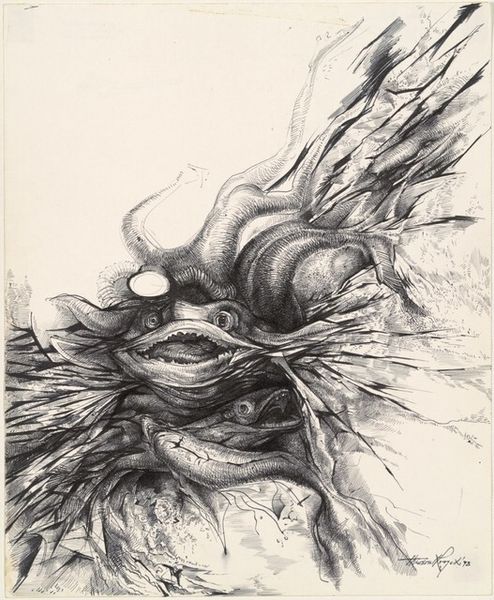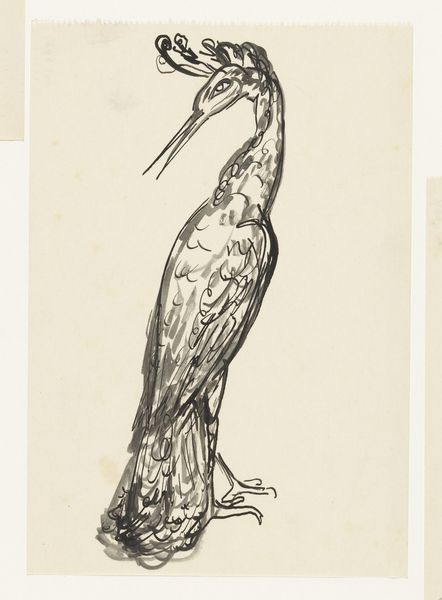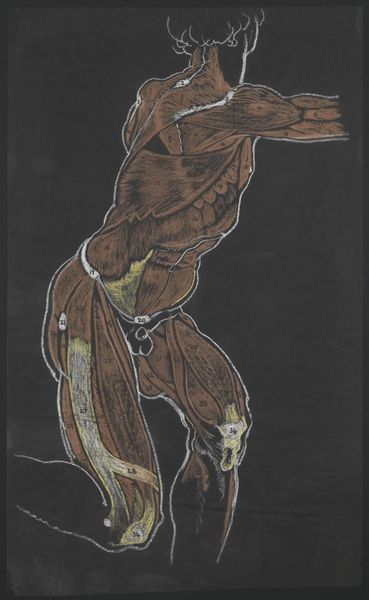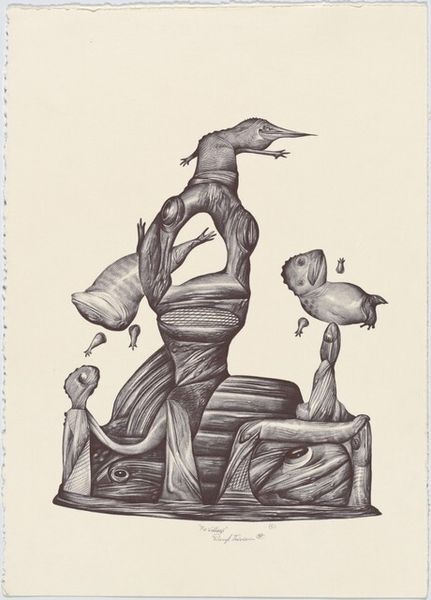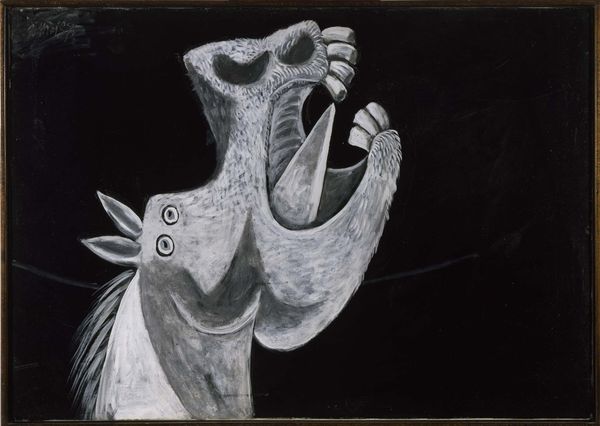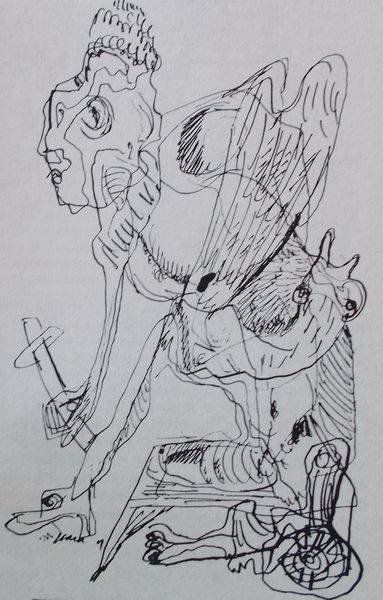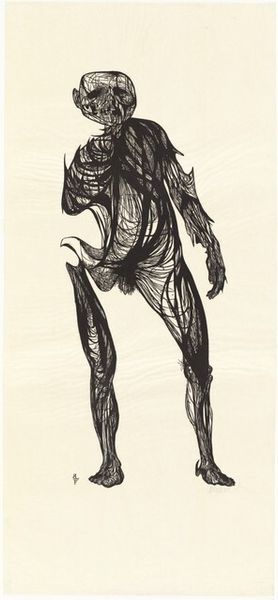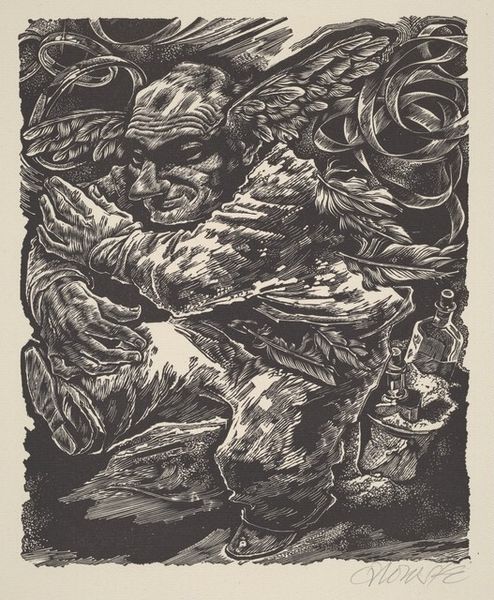
drawing, watercolor, ink
#
portrait
#
drawing
#
ink painting
#
fantasy-art
#
figuration
#
watercolor
#
ink
#
symbolism
#
portrait drawing
#
watercolour illustration
Copyright: Public Domain: Artvee
Editor: This is Jan Matejko's "Devil with a bird’s head" from 1890, done with ink and watercolor. It's… striking. The creature’s got these intense eyes and bird-like features but its body seems almost human. What’s your interpretation of a work like this? Art Historian: Thank you for that description, it really sets the scene! Well, firstly, I think it is essential to note that Matejko created this sketch in a specific cultural context: 19th-century Poland, which was undergoing political turmoil, including being partitioned and under foreign control. With that said, what I immediately see is a critique of power, disguised through folklore and the grotesque. Think about it - what does the blending of avian and human traits signify to you? Editor: Hmm, it could be about losing humanity… like power corrupting someone and turning them into something monstrous? Art Historian: Exactly! We should consider who benefits when monstrous power thrives, and who suffers. The artist does not portray the devil in hell; on the contrary, he brings it into this earthly existence by ascribing certain attributes to the character. What kind of behaviours might Matejko be thinking of when designing such a character, considering this drawing was created around the fin de siecle? Editor: It could be criticising specific behaviours like greed, corruption, maybe even a warning about those who abuse their positions. The figure even looks as though they're thinking... plotting! Art Historian: I absolutely agree. It is important to remember how symbolist works can offer alternative ways to think about these difficult conversations, outside direct and potentially dangerous means of criticising individuals in society, and speaking more to collective fears or desires of Polish society around this period. Editor: This is really helpful; I now see the painting in terms of how the personal is linked to the social and historical. I learned so much by considering this viewpoint. Art Historian: Likewise. By digging deeper into the context, we find Matejko offering more than just a monster, but perhaps a mirror to some of society’s darkest aspects during a critical point in time for Polish history.
Comments
No comments
Be the first to comment and join the conversation on the ultimate creative platform.

